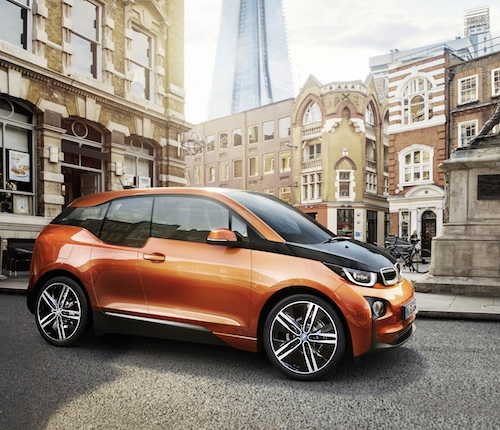It probably doesn’t matter to most people what their car weighs. Some people geek out on things like this, and for example claim that the Tesla Model S is really heavy because it weighs about 5,000 lbs. And when you’re told a number like that, it sounds heavy, but then we jump behind the wheel of a Model S, zip down the road, and it’s an amazing experience, and it doesn’t seem to matter that it weighs so much. However, the weight of electric cars is reflected in their cost, and the cost is a limiting factor in electric vehicle adoption.
Maybe, just maybe, if the car companies were to light-weight their electric cars, the price could be lowered, because the battery pack could be lighter and smaller, because the lighter weight requires less energy to move, and therefore to achieve the same driving range requires a smaller battery pack.
The Edison2 Very Light Car![]() actually fits this pattern. The designer has huge claims on range and energy efficiency thanks to it being very light-weight and an ingenious redesign of the basic architectural shape for cars. But they aren’t a car manufacturer, and to get this design to the public requires a car manufacturer to buy in. Who knows when that will happen? (if ever)
actually fits this pattern. The designer has huge claims on range and energy efficiency thanks to it being very light-weight and an ingenious redesign of the basic architectural shape for cars. But they aren’t a car manufacturer, and to get this design to the public requires a car manufacturer to buy in. Who knows when that will happen? (if ever)
Another company to try this approach was Aptera, who used composite material manufacturing techniques and an ultra-aerodynamic car body to develop an extremely efficient vehicle. Unfortunately that company crashed and burned completely.
 |
| Aptera – since died |
The way this concept works is all about physics. It requires less energy to move a light vehicle than it does a heavy vehicle, plus an aerodynamic vehicle requires less energy to move than would a brick. If you put together a highly aerodynamic light-weight car, it will require phenomenally less energy to move than would a heavy non-aerodynamic car.
This factor is more important to electric vehicles because they carry so little energy compared to gas cars – the typical electric car has a 24 kilowatt-hour battery pack which is the energy equivalent of 2/3rds of a gallon of gasoline.
 |
| BMW i3 |
So far the only electric car makers to have taken lightweighting seriously is Aptera and BMW. Aptera died, unfortunately. BMW however has developed a revolutionary new process for carbon fiber manufacturing![]() in an effort to lighten the weight of the BMW i3 and BMW i8. The first is an electric city car, and the second is a plug-in hybrid sports car.
in an effort to lighten the weight of the BMW i3 and BMW i8. The first is an electric city car, and the second is a plug-in hybrid sports car.
The upper portion is made entirely from carbon fiber reinforced plastic. The reason is that it’s ultra strong and ultra light-weight at the same time. However, until now, CFRP has been so expensive it could only be used for high end vehicles like race cars, and not for consumer grade vehicles.
It’s hard to make the case, though, that this resulted in an inexpensive car. First, it’s a BMW. Second, the MSRP is $42k. Third, it won’t be available until mid-2014.
The thing is that extreme lightweighting required to radically affect the price of an electric car requires something fundamentally new, like a totally new method of carbon fiber production.
Kudo’s for BMW to do it. Don’t expect to see it in a mass production car from another automaker any time soon.
- Highway design could decrease death and injury risk, if “we” chose smarter designs - March 28, 2015
- GM really did trademark “range anxiety”, only later to abandon that mark - March 25, 2015
- US Government releases new regulations on hydraulic fracturing, that some call “toothless” - March 20, 2015
- Tesla Motors magic pill to solve range anxiety doesn’t quite instill range confidence - March 19, 2015
- Update on Galena IL oil train – 21 cars involved, which were the supposedly safer CP1232 design - March 7, 2015
- Another oil bomb train – why are they shipping crude oil by train? – Symptoms of fossil fuel addiction - March 6, 2015
- Chevron relinquishes fracking in Romania, as part of broader pull-out from Eastern European fracking operations - February 22, 2015
- Answer anti- electric car articles with truth and pride – truth outshines all distortions - February 19, 2015
- Apple taking big risk on developing a car? Please, Apple, don’t go there! - February 16, 2015
- Toyota, Nissan, Honda working on Japanese fuel cell infrastructure for Japanese government - February 12, 2015













